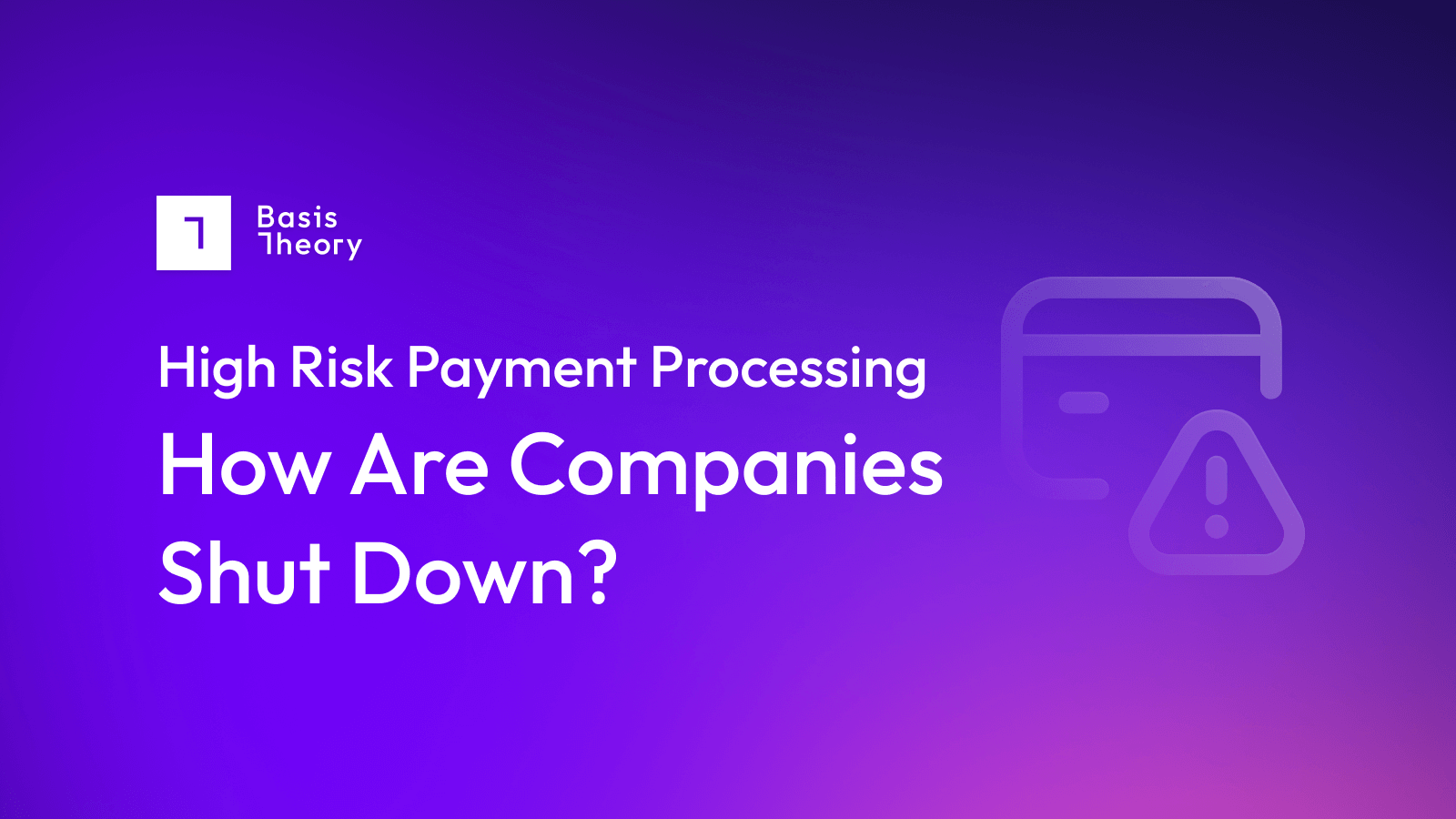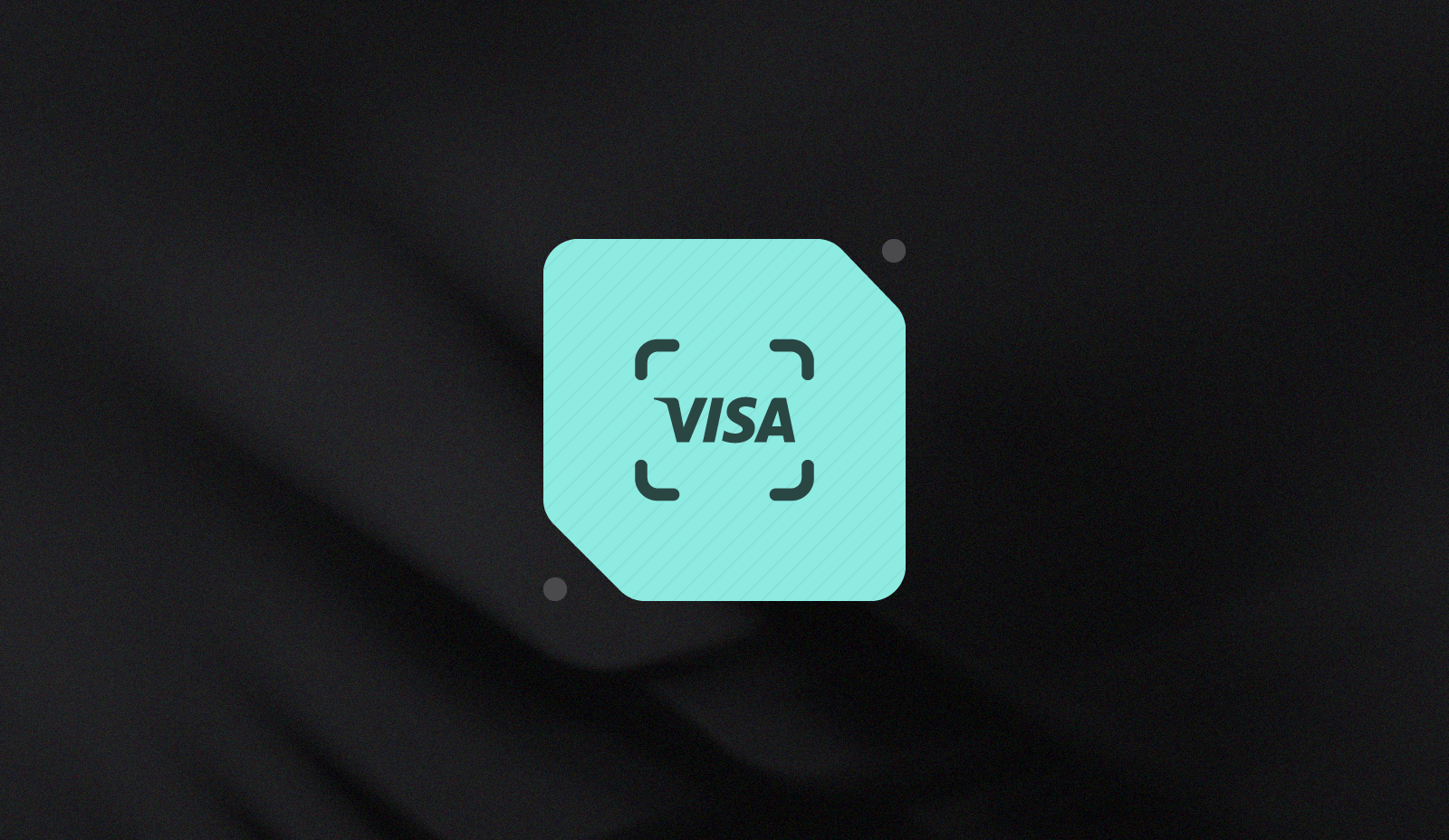High Risk Payment Processing: How Are Merchants Shut down?

Operating as a high-risk merchant, one of the most feared experiences is getting shut down. Even the looming threat of this happening is enough to keep many merchants up at night.
In this post - part two of a five-part series on high-risk payment processing - we will cover what it actually means for an account to be shut down and what merchants should expect if a shutdown occurs.
Why Would a High-Risk Company Be Shut Down?
We covered this a bit in the first post of the series discussing the rules of the high-risk payment processing game. Fundamentally, the reasons that a company would be designated as high risk in the first place are likely to be the cause of a company being prevented from transacting.
In short, some of these reasons could be:
- High chargeback rates - if a merchant exceeds the chargeback thresholds set by the card networks (0.65% for Visa and 1% for Mastercard), they may incur fines. If they are considered excessive amounts (1.5% or higher), then the merchant account could be terminated.
- Operating in a risky business - just by the pure nature of being in a “riskier” business, a merchant could be shut down by a PSP even with no prior issues. This could be due to the PSP hedging against what could be a potential issue eventually, or due to that PSP no longer wanting to operate in that space.
However, the rules aren’t hard and fast, and the process is tricky: everyone is managing their own level of risk.
What is the Process of a High-Risk Merchant Being Shut Down?
To put it simply, the card networks will notify a merchant acquirer if any of their merchants experience chargebacks above the network’s threshold. It is then up to the acquirer to decide how to handle the next steps with the merchant.
In rare cases, the acquirer (in many cases, an all-in-one PSP), can choose to prevent the merchant from transacting at any point without warning. The PSP can shut down the account and require the merchant to leave the platform. They may also retain funds that are owed to the merchant for a period of time in anticipation of future refunds or chargebacks, further hurting the merchant’s cashflow.
In more common situations, however, acquirers will give the merchant a warning period in alignment with the warning period defined by the card networks.
In yet other cases, PSPs may do a mix of following card network guidance and their own internal system rules to determine next steps and potential shutdown procedures.
Visa Dispute Monitoring Program (VDMP)
At the end of each month, Visa calculates the dispute rates for that month for each merchant.
If a merchant exceeds 75 disputes or a dispute ratio (disputes-to-transactions) of 0.65%, the merchant will be on Early Warning. This does not mean the merchant is officially on the VDMP but that it needs to be cautious of chargebacks in order to avoid inclusion on the list.
However, If a merchant meets or exceeds 100 disputes with a 0.9% dispute ratio, the merchant will be placed in the VDMP.
| Visa Program Threshold | Disputes | Ratio |
|---|---|---|
| Early Warning | 75 | 0.65% |
| Standard | 100 | 0.9% |
| Excessive/High Risk | 1,000 | 1.8% |
Further, a merchant will move from the VDMP standard program to the VDMP high-risk program if the merchant hits the excessive risk threshold of 1,000 disputes and a dispute ratio of 1.8% in a month.
Any merchant that is moved to the VDMP high-risk program because it exceeded the excessive dispute threshold will continue to be monitored under the VDMP high-risk program until the Merchant exits the VDMP (that is, gets below the threshold of inclusion at 100 disputes and a 0.9% dispute ratio) regardless of whether the merchant gets below the excessive threshold. It is also highly likely that PSP partners will levy additional fees, and ramp up the per-unit cost for each chargeback.
Any merchant that changes acquirers or country locations will also bring its VDMP program inclusion status (or an equivalent status) until deemed ready to leave the program.
A merchant will exit the VDMP if it can remain below the program thresholds for three consecutive months.
VDMP Standard Program timeline
Once placed on the VDMP, Visa will continue to monitor the merchant’s disputes and ratio to determine next action. This monitoring includes all disputes listed in Visa’s Dispute Management Guide.
Should a merchant fall into the standard program for an extended period of months, acquirers and merchants will be required to provide ongoing documentation of remediation efforts, and both parties may begin to be fined by Visa. After 12 months of not getting below the threshold, the merchant may be no longer allowed to transact with Visa.
| Program Status | Visa’s Stated Actions |
|---|---|
| Month 1: Notification | Within 10 calendar days of exceeding the thresholds, the merchant will be notified by the acquirer. The acquirer must review activity and research the cause of the excessive disputes. |
| Months 2-4: Workout period | From month 2 onwards: The acquirer has to implement a Dispute remediation plan for the merchant and provide required documentation to Visa From month 3 onwards: acquirer provides Visa written updates of the Dispute remediation plan |
| Months 5-11 | From month 5 onwards: the acquirer may face fees (and will almost certainly pass these to the merchant) Month 8: Acquirer must send Visa written confirmation that the merchant has been notified that it may lose Visa acceptance privileges if it fails to reduce its disputes below the program thresholds by month 12 Month 10: review fees are applicable (and may pass to the merchant) |
| Month 12 | Non-compliance assessments and fees may occur and the merchant may be eligible for disqualification |
VDMP High-Risk Program timeline
Should a merchant fall into the high-risk program for an extended period of months, acquirers and merchants will be required to provide ongoing documentation of remediation efforts, and fines will begin almost immediately. After 12 months of not getting below the threshold, the merchant may be no longer allowed to transact with Visa.| Program Status | Visa’s Stated Actions |
|---|---|
| Month 1: Enforcement Period | Within 10 calendar days of exceeding the thresholds, the merchant will be notified by the acquirer and non-compliance assessments and fees may occur. The acquirer will have to review activity and research the cause of the excessive disputes. A remediation plan should be created. |
| Months 2-5: Enforcement Period | Non-compliance assessments and fees will occur. Acquirers must work with merchants to ensure the remediation plan is effectively reducing disputes and provide monthly written documentation to Visa signaling this. |
| Months 6-11: Enforcement Period | Non-compliance assessments and fees will occur. Acquirers must work with merchants to ensure the remediation plan is effectively reducing disputes and provide monthly written documentation to Visa signaling this. Month 6: Acquirer must provide Visa with the documentation sent to merchants Month 7: Review fees are applicable. |
| Month 12: Enforcement Period | Non-compliance assessments, review fees, and other fees will occur. Merchant is eligible for disqualification. Acquirers must work with merchants to ensure the remediation plan is effectively reducing disputes and provide monthly written documentation to Visa signaling this. |
Mastercard Excessive Chargeback Program (ECP)
Similar to the VDMP, Mastercard has a program for when merchants pass excessive chargebacks through the Mastercard card network. Calculated for the preceding month, a merchant is included in the ECP if they have two or more months with the following chargeback levels (does not need to be consecutive months):| Mastercard Program Level | Disputes / Chargebacks | Ratio |
|---|---|---|
| Excessive Chargeback Merchant (ECM) | 100 | 1.5% (150 basis points) |
| High Excessive Chargeback Merchant (HECM) | 300 | 3% (300 basis points) |
Beginning at two months, non-performance assessments will be necessary for the acquirer to complete on behalf of the merchant.
The merchant cannot be removed from the ECP until falling below the ECM threshold for three consecutive months.
What Does a Shutdown Look Like?
There are technically two types of shutdowns: shutdown by the card network and shutdown by the acquirer.
If a merchant goes through the 12 months of active communication between the merchant, acquirer, and the card networks as part of the VDMP, they will likely not be surprised to receive a notice of shutdown from both Visa and their acquirer. These merchants would likely be unable to use that PSP any further, and may also no longer be able to transact via the card network.
In other cases, the acquirer shutdown may be due to internal review of the merchant’s accounts only, and not due to a Visa shutdown. In this case, the merchant would need to find a new acquirer but would still be able to transact via the card networks.
Shutdown Communication
For most all-in-one PSPs, the communication of a shutdown comes over email.
For Stripe, this shutdown notice frequently includes the following information:
- Notice of account shutdown, effective immediately
- 100% of funds being held to cover incoming transactions for the next 90 days
- 14 days to switch to a new provider before being unable to process any future transactions
After a shutdown due to excessive disputes, acquirers are required to notify the card networks - Visa will need notice of account closure and Mastercard will need the acquirer to add the merchant to the MATCH program.
Continue Reading
In this five-part blog series, we cover in-depth details on high-risk merchants, including:
- The Rules of the Game
- How Are Merchants Shut Down? (this post)
- How to Stay Operational with One Payment Processor
- Working Effectively with Multiple PSPs
- High-Performing High-Risk Merchants: Best Practices
.png?width=365&height=122&name=BTLogo%20(1).png)



